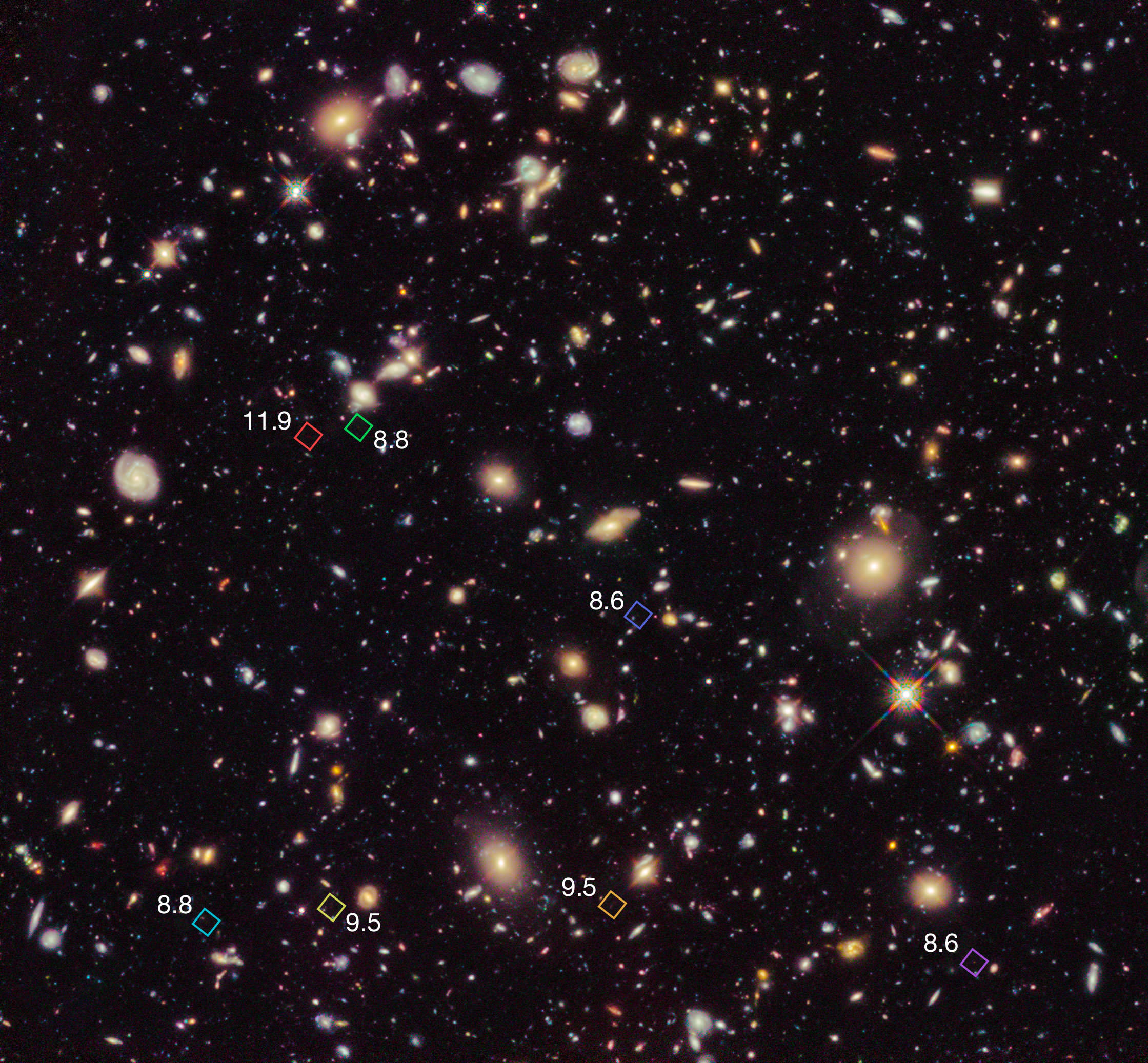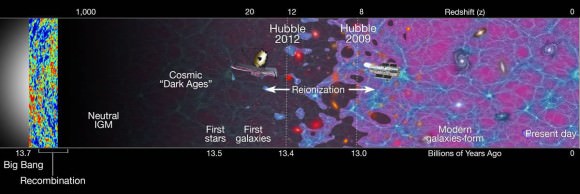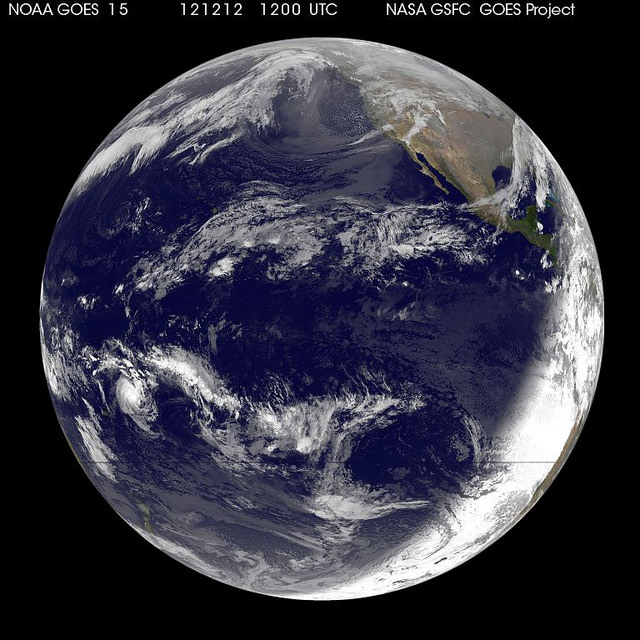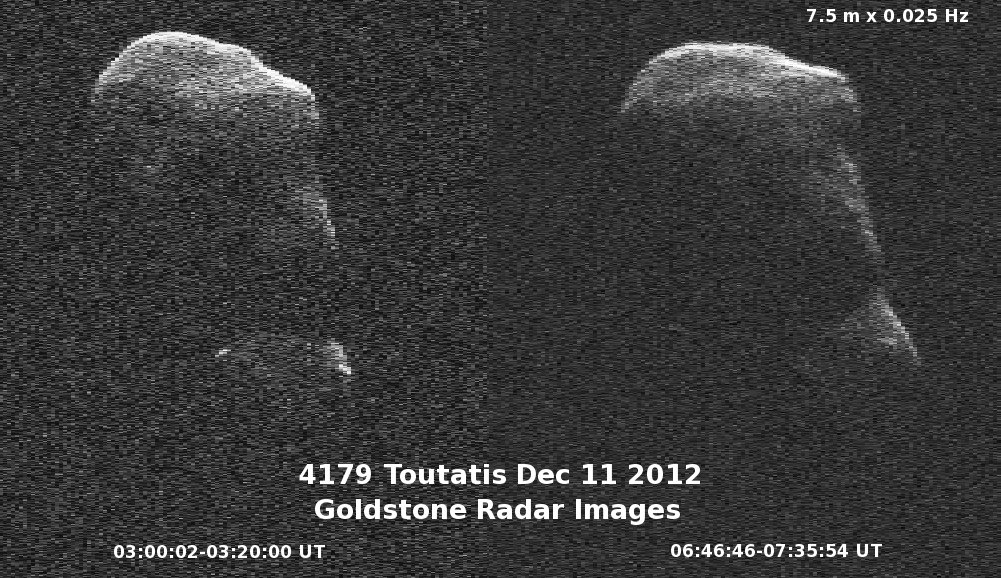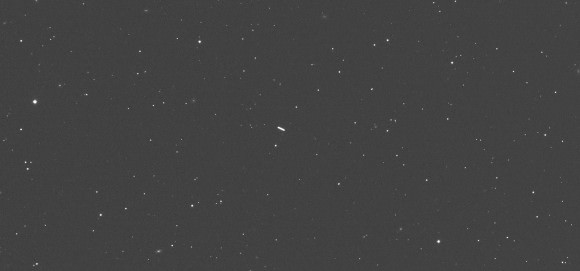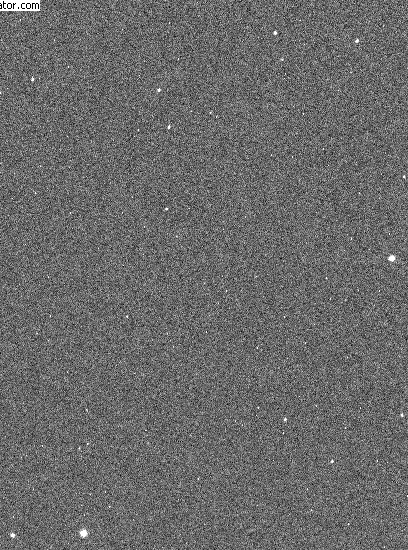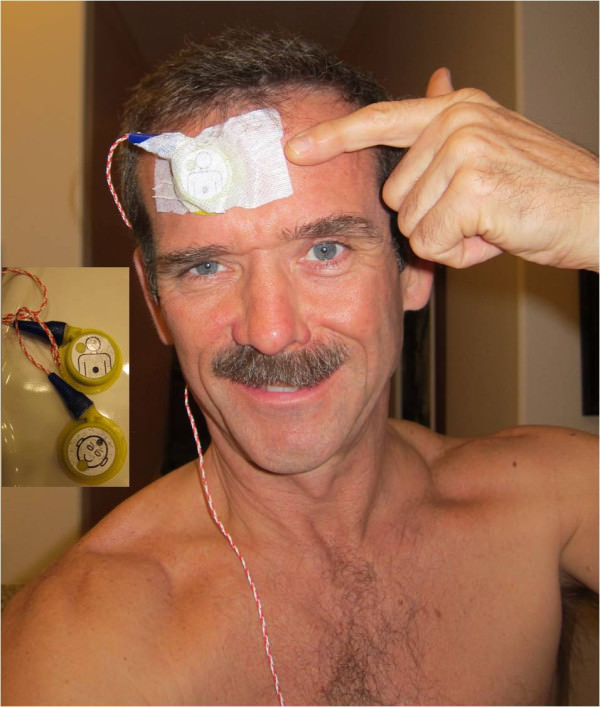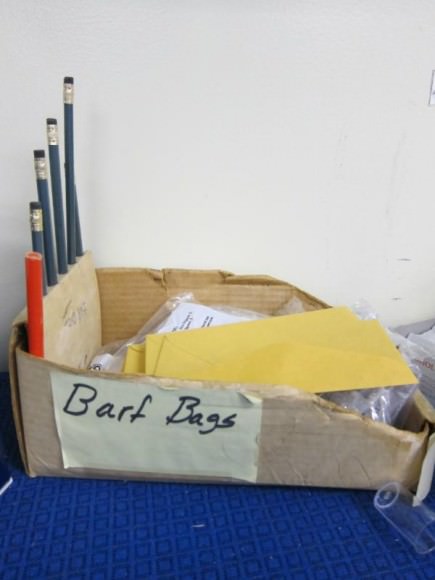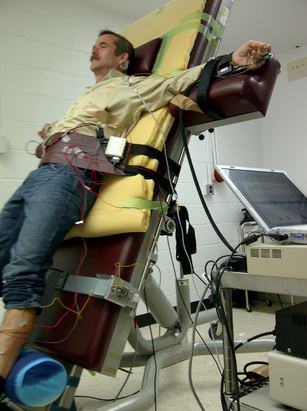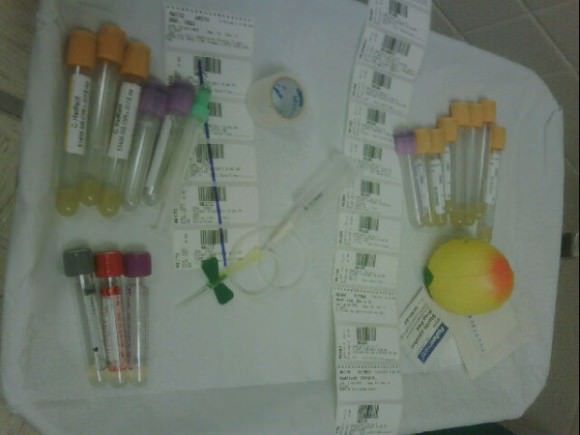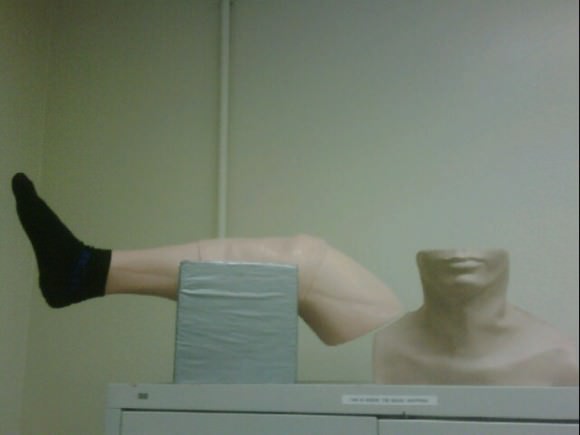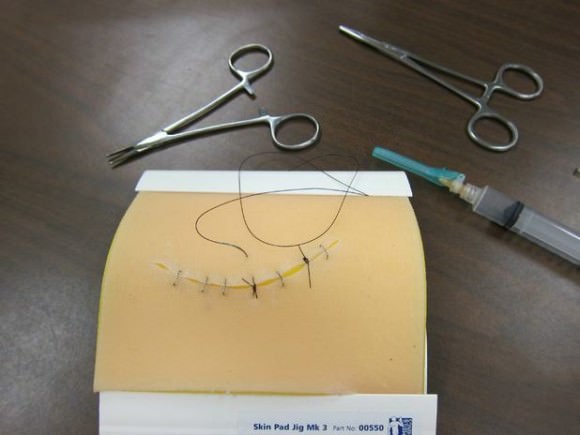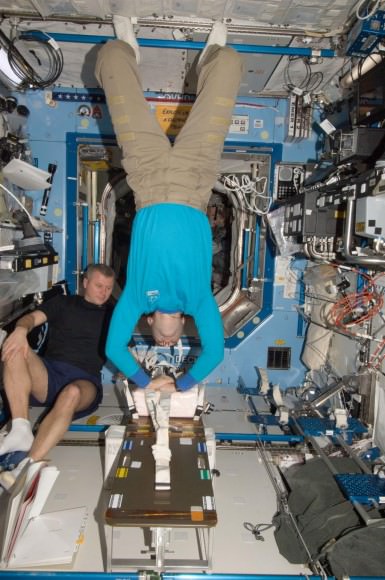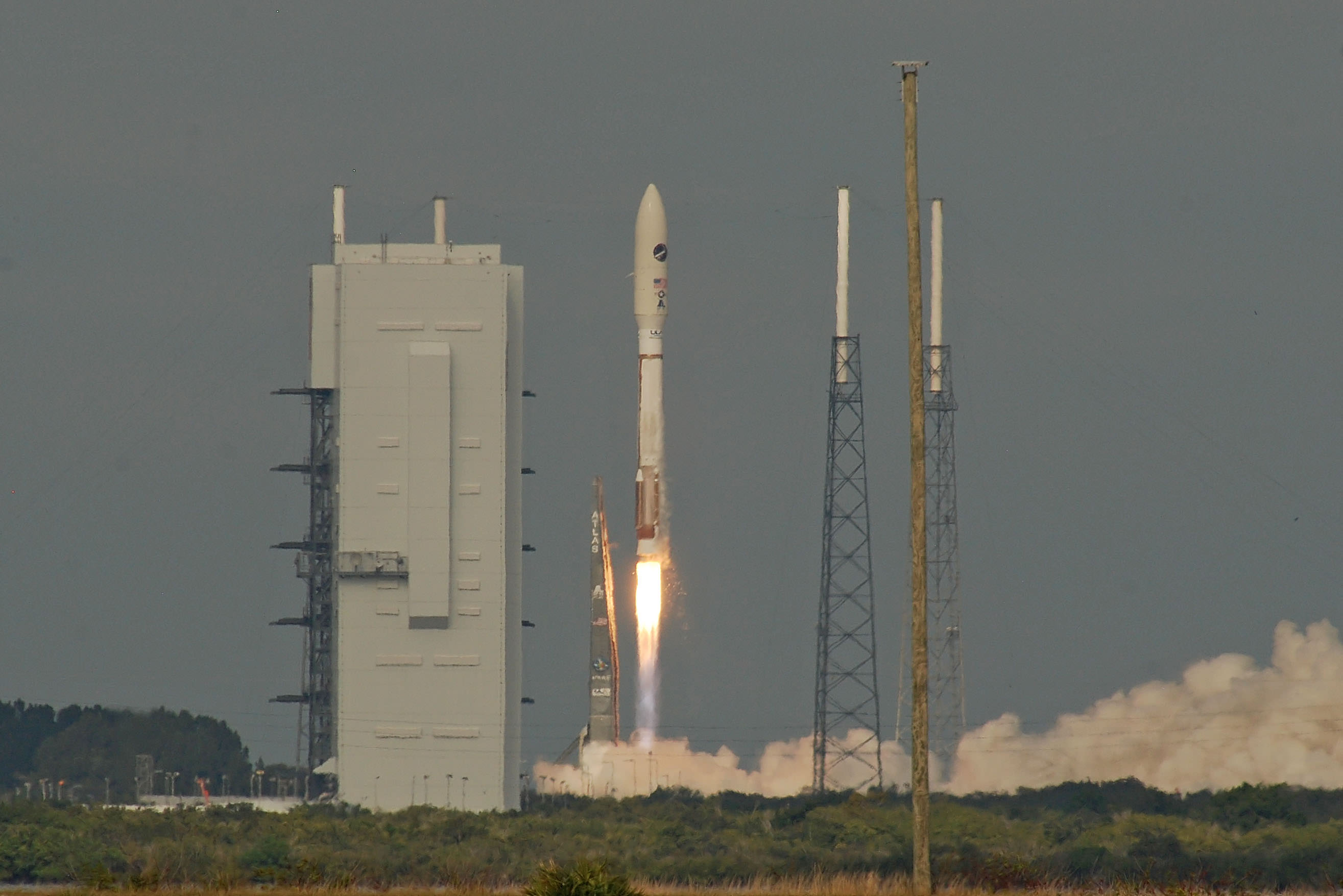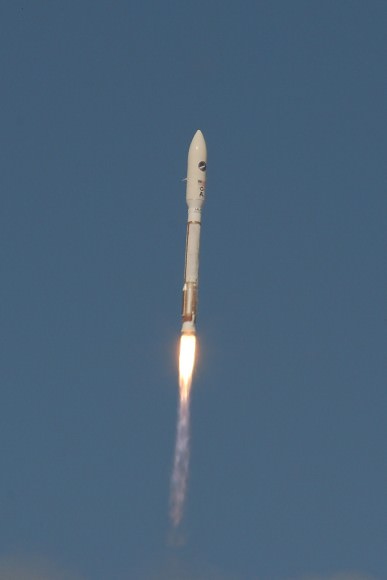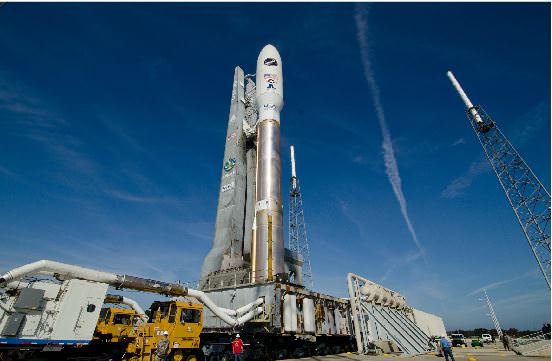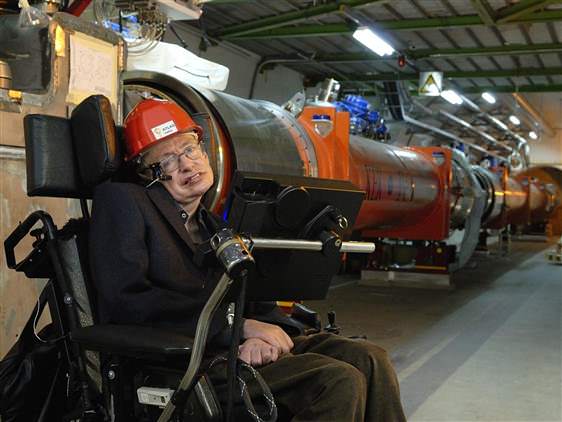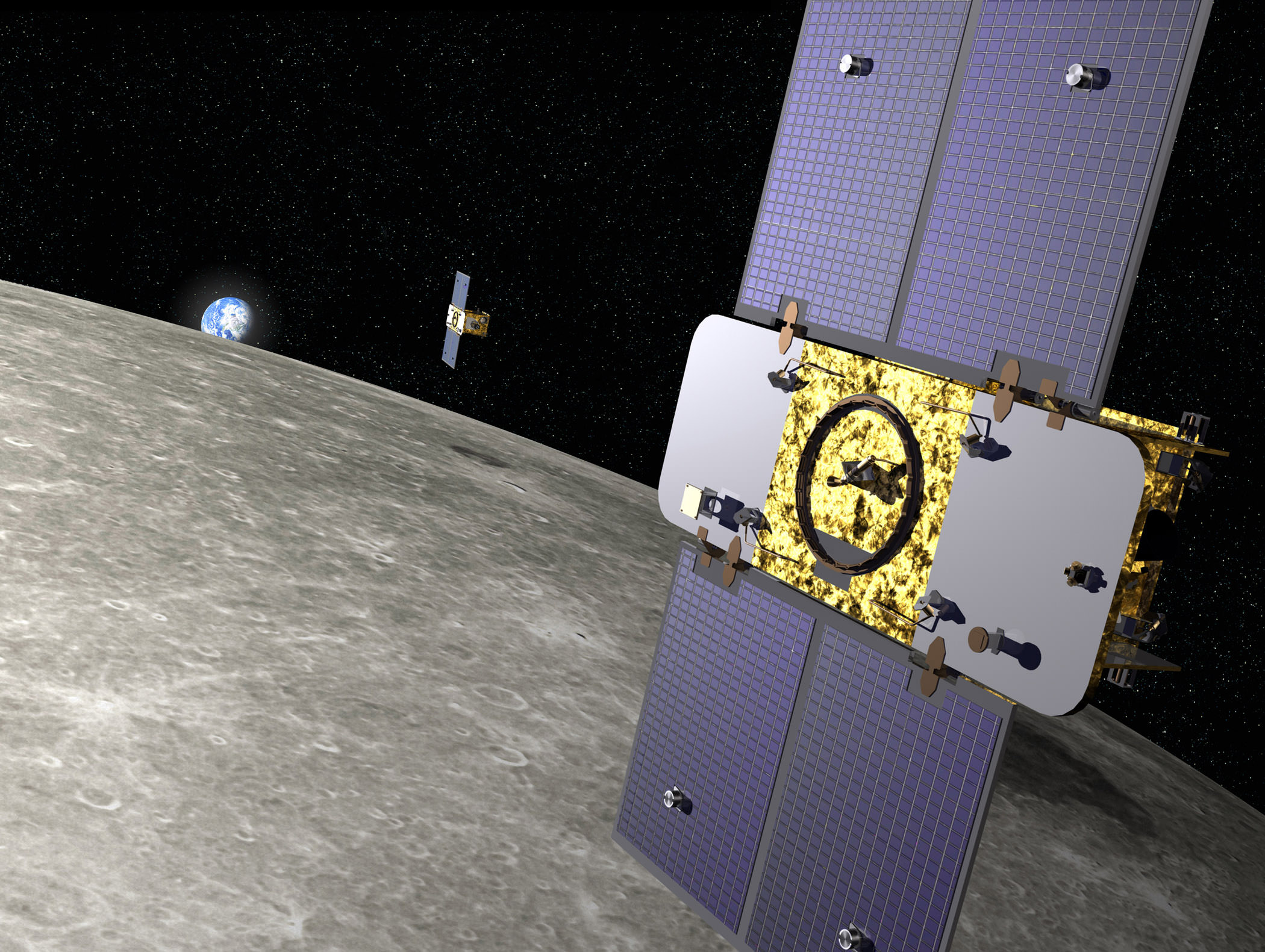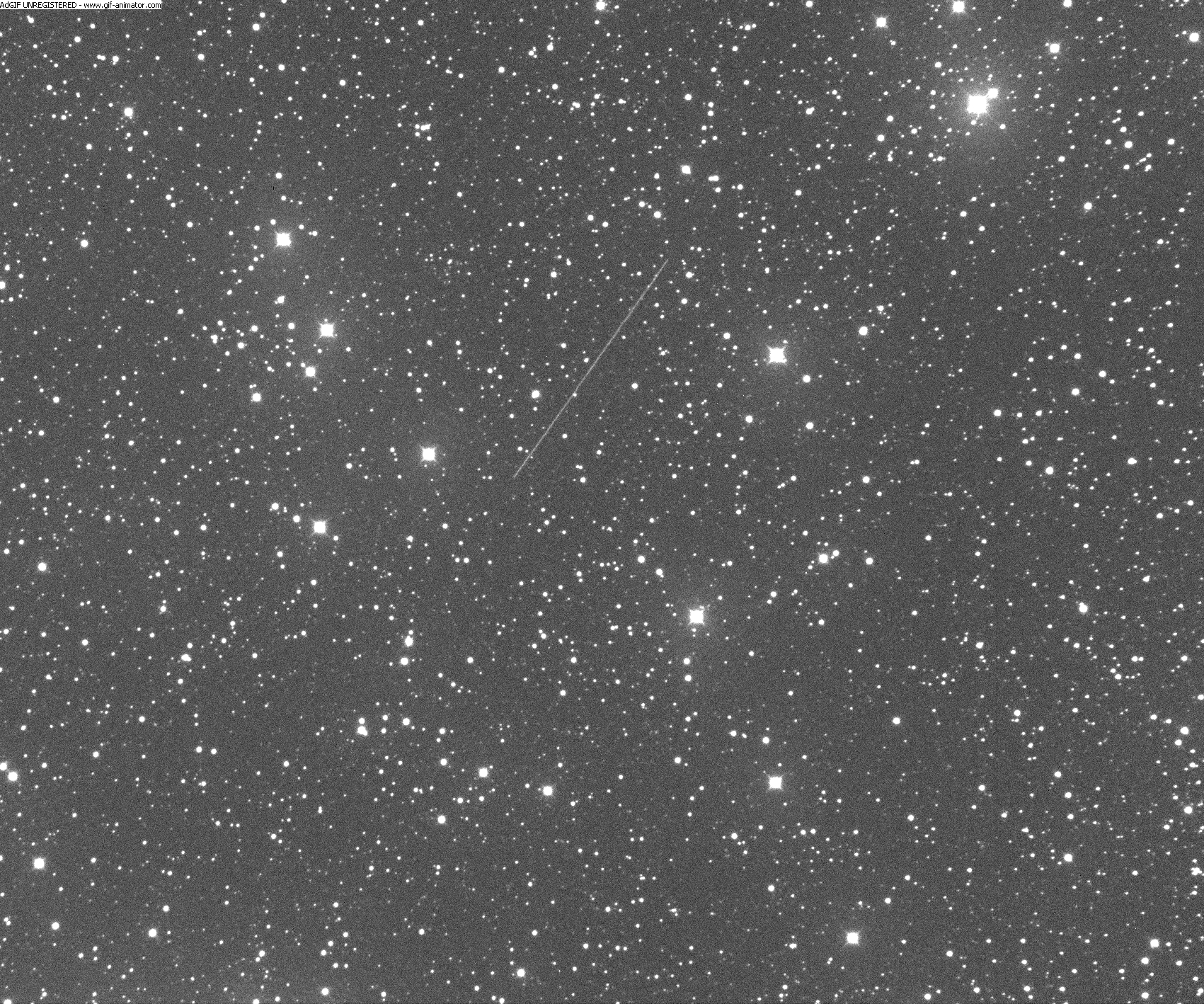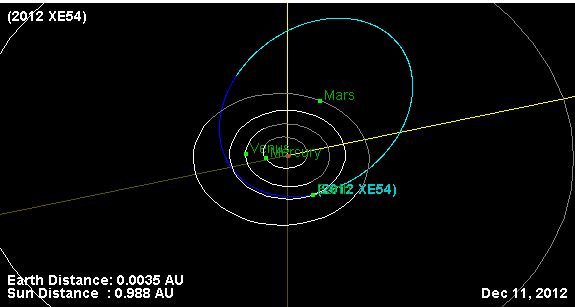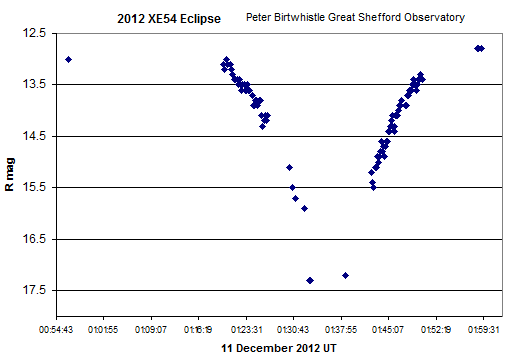This new image of the Hubble Ultra Deep Field (HUDF) 2012 campaign reveals a previously unseen population of seven faraway galaxies, which are observed as they appeared in a period 350 million to 600 million years after the Big Bang. Credit: NASA, ESA, R. Ellis (Caltech), and the UDF 2012 Team
Astronomers using NASA’s Hubble Space Telescope have spotted some of the most distant, dim and ancient galaxies ever detected in a new survey. The images, taken with Hubble’s Wide Field Camera 3 (WFC 3) looks further back in time than any previous Hubble observation, providing information about the conditions in the early Universe.
“This is like a scientific version of the story of Genesis,” said astronomer Avi Loeb from Harvard University.
The seven distant galaxies represent a previously unseen population of galaxies that formed more than 13 billion years ago, when the Universe was less than 3 percent of its present age. In these deepest images to date from Hubble, astronomers were able to take a sample of the amount of galaxies at the time. The results show a smooth decline in the number of galaxies with increasing look-back time to about 450 million years after the Big Bang.
The data provides the first reliable census of this uncharted period of cosmic history, according to the scientists. As astronomers look even deeper into the Universe, galaxy numbers appear to drop off smoothly leading them to believe that the “cosmic dawn” was gradual, not a dramatic event.
“Observations of the microwave afterglow from the Big Bang tell us that reionization happened more than about 13 billion years ago,” said Brant Robertson of the University of Arizona in Tucson, a member of the survey team. “Our data confirms that reionization was a drawn-out process occurring over several hundred million years with galaxies slowly building up their stars and chemical elements. There wasn’t a single dramatic moment when galaxies formed; it was a gradual process.”
These galaxies were found as part of an ambitious Hubble survey of an intensively studied patch of sky known as the Ultra Deep Field (UDF), which was originally taken in 2003-2004, focusing in on a small area in the sky in the constellation Fornax. In the new 2012 campaign, called UDF 2012, a team of astronomers led by Richard Ellis of the California Institute of Technology used the WFC3 to peer deeper into space in near-infrared light than any previous Hubble observation. The observations were made over a period of six weeks during August and September 2012, and the first scientific results are now appearing in a series of scientific papers. The UDF 2012 team is publicly releasing these unique data, after preparing them for other research groups to use.
“Hubble is achieving just great science,” said John Grunsfeld, former astronaut and NASA’s associate administrator for science, speaking at a briefing about the new survey. “This is an origins story, where we’re going back to the beginning, back to the first stars that appeared in the Universe. This validates that when we get James Webb Space Telescope online it will have a lot to look at and a lot to do.”
The James Webb Space Telescope is slated to launch in 2018.
Astronomers detected seven galaxies in the time period 400-600 million years after the Big Bang. All extremely distant, they ranged in distance with redshifts from 8.6 to nearly 12.
Astronomers study the distant universe in near-infrared light because the expansion of space stretches ultraviolet and visible light from galaxies into infrared wavelengths, a phenomenon called “redshift.” The more distant a galaxy, the higher its redshift.
Notably, one of the galaxies may be a distance record breaker, observed 380 million years after the birth of our universe in the Big Bang, corresponding to a redshift of 11.9. This is the galaxy UDFj-39546284, which was previously detected and was originally suggested as the most distant object ever found nearly two years ago by Hubble. Later observations put it at a redshift of 10.3, but the newly refined observations put it even more distant.
A timeline of the Universe and our observations of it. Credit: University of Arizona.
Scientists think that the universe began with the Big Bang about 13.7 billion years ago. Hydrogen formed about 400,000 years later but with no stars, spacetime was dark. About 200 million years later, hydrogen clouds collapsed forming the first stars and galaxies; what astronomers call the “cosmic dawn.” Light from these new stars began breaking down hydrogen into protons and electrons during a time period called cosmic reionization. In the present universe, scientists see galaxies growing in mass and size with the synthesis of elements, leading to the formation of complex molecules including the components to create life. Our Sun and solar system formed just over 4 billion years ago.
“The team pushed Hubble to its limits. This is probably the farthest back Hubble can look, according to the study leader, Richard Ellis. “We are pushing Hubble well beyond what it was designed to do.”
Read more about the findings and the HUDF 2012 Campaign at the HubbleSite.
Read the team’s paper: The Abundance of Star-Forming Galaxies in the Redshift Range 8.5 to 12: New Results from the 2012 Hubble Ultra Deep Field Campaign
Additional Sources: CalTech ESA Hubble

